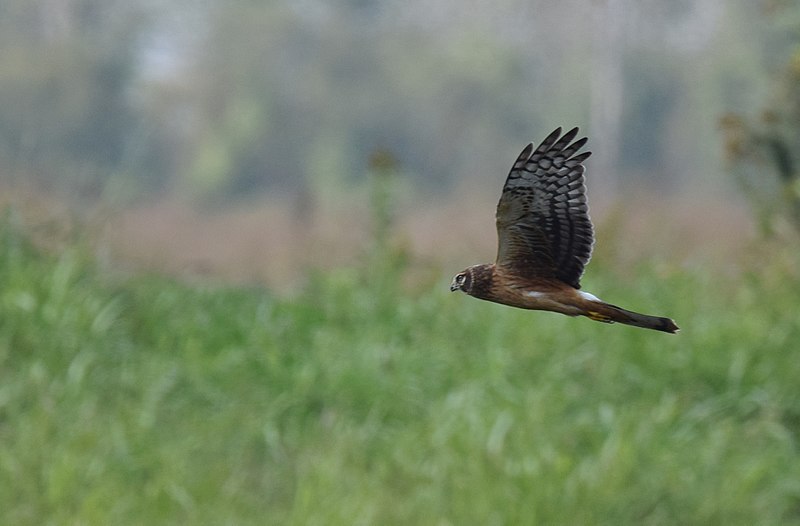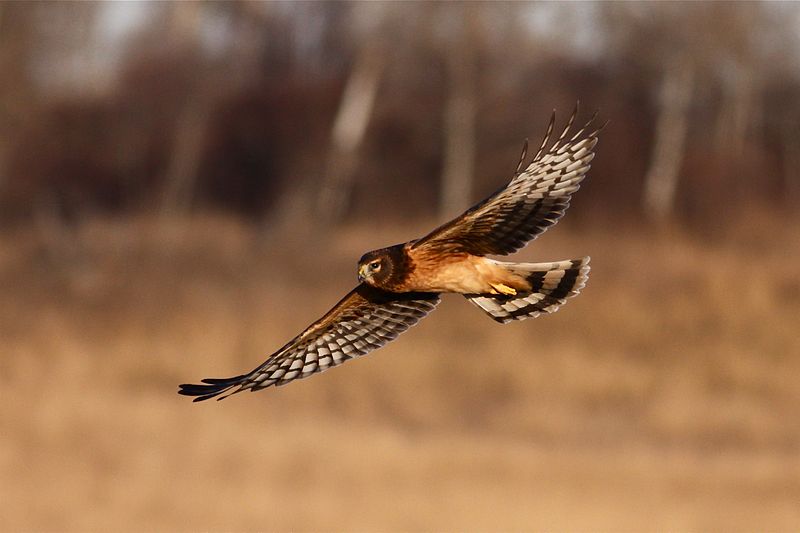|
|
northern harrier
Circus hudsonius
Identification:
This imposing raptor is larger than a crow. The adult male is gray above, pale below, with a white rump and dark trailing edge to its wide wings. Its tail is long. The adult female is larger and browner, but she has the same white rump. Young birds have a rusty colored front and banded tail and feathers. The face is somewhat owl-like, the better to hear prey. Behavior: The harrier glides low over a field or sometimes hovers, swooping to snatch its prey. Other raptors rely on eyesight but the harrier also uses its sense of hearing to find prey. Males have multiple mates and bring food to all their young. Mostly they eat small mammals and birds but will occasionally go after something bigger such as a duck. They also may scavenge. They prefer open wetland and grassland and nest on the ground in dense vegetation. What brings it to the SBG? The most likely lure is small mammals or birds that inhabit the garden. When can I see it? The Northern Harrier resides year-round in our area. |


